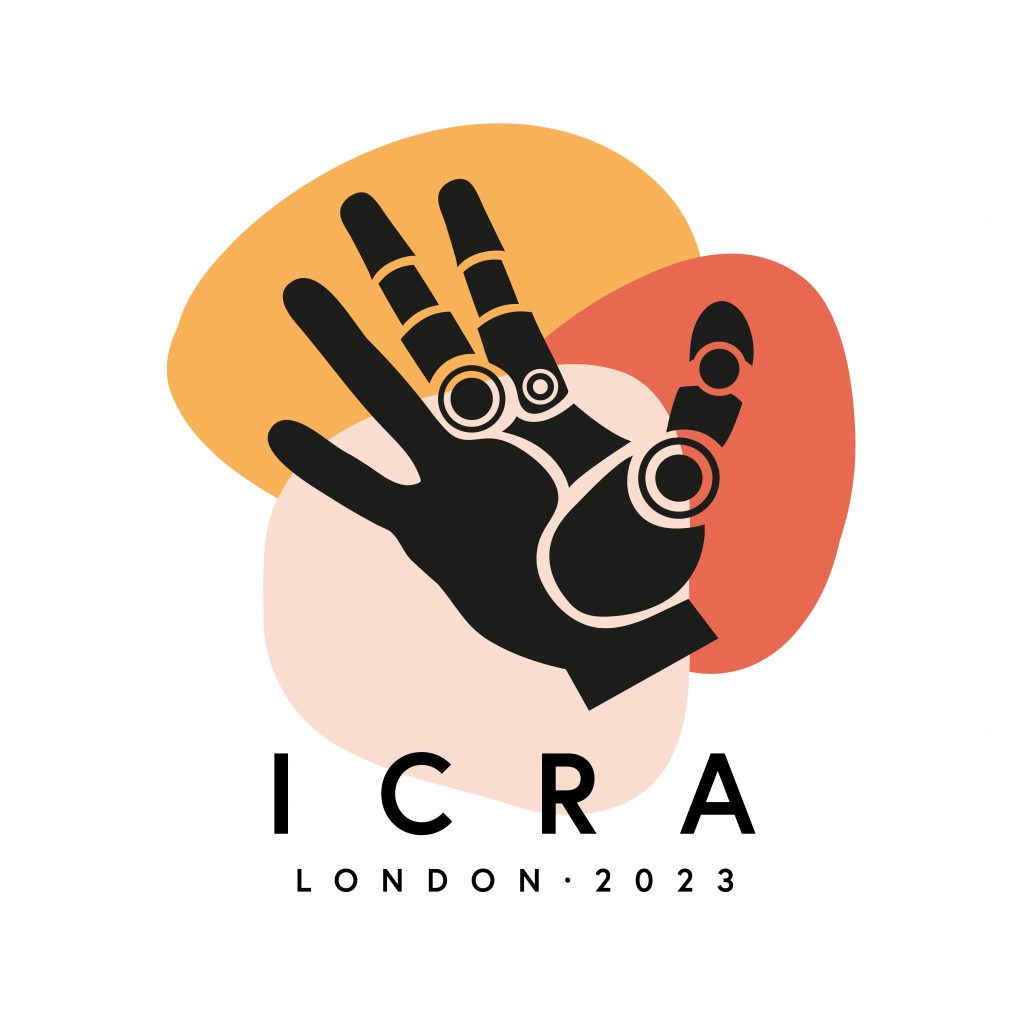Will AI robots take middle-class jobs?
A novel technique to improve the learning ability of robots that perform repetitive tasks
A plant-inspired controller that could facilitate the operation of robotic arms in real-world environments
Valmont Records Longest BVLOS Drone Flight on the Wings of T-Mobile 5G
#ICRA2023 awards finalists and winners

In this post we bring you all the paper awards finalists and winners presented during the 2023 edition of the IEEE International Conference on Robotics and Automation (ICRA). Congratulations to the winners and finalists!
ICRA 2023 Outstanding Paper
- Distributed Data-Driven Predictive Control for Multi-Agent Collaborative Legged Locomotion, by Fawcett, Randall; Amanzadeh, Leila; Kim, Jeeseop; Ames, Aaron; Akbari Hamed, Kaveh. (WINNER)
- Proficiency Self-Assessment without Breaking the Robot: Anomaly Detection using Assumption-Alignment Tracking from Safe Experiments, by Cao, Xuan; Crandall, Jacob W.; Pedersen, Ethan; Gautam, Alvika; Goodrich, Michael A.
- In-Hand Manipulation in Power Grasp: Design of an Adaptive Robot Hand with Active Surfaces, by Cai, Yilin; Yuan, Shenli.
ICRA 2023 Outstanding Automation Paper
- Towards Open-Set Material Recognition Using Robot Tactile Sensing, by Liu, Kun-Hong; Yang, Qianhui; Xie, Yu; Huang, Xiangyi.
- Target-Aware Implicit Mapping for Agricultural Crop Inspection, by Kelly, Shane; Riccardi, Alessandro; Marks, Elias Ariel; Magistri, Federico; Guadagnino, Tiziano; Chli, Margarita; Stachniss, Cyrill. (WINNER)
- Can Machines Garden? Systematically Comparing the AlphaGarden vs. Professional Horticulturalists, by Adebola, Simeon Oluwafunmilore; Parikh, Rishi; Presten, Mark; Sharma, Satvik; Aeron, Shrey; Rao, Ananth; Mukherjee, Sandeep; Qu, Tomson; Wistrom, Tina; Solowjow, Eugen; Goldberg, Ken.
ICRA 2023 Outstanding Student Paper
- M-EMBER: Tackling Long-Horizon Mobile Manipulation Via Factorized Domain Transfer, by Wu, Bohan; Martin-Martin, Roberto; Fei-Fei, Li.
- Robust Locomotion on Legged Robots through Planning on Motion Primitive Graphs, by Ubellacker, Wyatt; Ames, Aaron. (WINNER)
- Occlusion Reasoning for Skeleton Extraction of Self-Occluded Tree Canopies, by Kim, Chung Hee; Kantor, George.
ICRA 2023 Outstanding Deployed Systems Paper
- GUTS: Generalized Uncertainty-Aware Thompson Sampling for Multi-Agent Active Search, by Bakshi, Nikhil Angad; Gupta, Tejus; Ghods, Ramina; Schneider, Jeff. (WINNER)
- FRIDA: A Collaborative Robot Painter with a Differentiable, Real2Sim2Real Planning Environment, by Schaldenbrand, Peter; McCann, James; Oh, Jean.
ICRA 2023 Outstanding Dynamics and Control Paper
- Nonlinear Model Predictive Control of a 3D Hopping Robot: Leveraging Lie Group Integrators for Dynamically Stable Behaviors, by Csomay-Shanklin, Noel; Dorobantu, Victor; Ames, Aaron. (WINNER)
- Robust, High-Rate Trajectory Tracking on Insect-Scale Soft-Actuated Aerial Robots with Deep-Learned Tube MPC, by Tagliabue, Andrea; Hsiao, Yi-Hsuan; Fasel, Urban; Kutz, J. Nathan; Brunton, Steven; Chen, YuFeng; How, Jonathan.
- Autonomous Drifting with 3 Minutes of Data Via Learned Tire Models, by Djeumou, Franck; Goh, Jon; Topcu, Ufuk; Balachandran, Avinash.
ICRA 2023 Outstanding Healthcare and Medical Robotics Paper
- MRI-Powered Magnetic Miniature Capsule Robot with HIFU-Controlled On-Demand Drug Delivery, by Tiryaki, Mehmet Efe; Doğangün, Fatih; Dayan, Cem Balda; Wrede, Paul; Sitti, Metin.
- Real-Time Constrained 6D Object-Pose Tracking of an In-Hand Suture Needle for Minimally Invasive Robotic Surgery, by Chiu, Zih-Yun; Richter, Florian; Yip, Michael C. (WINNER)
- Exploring Robot-Assisted Optical Coherence Elastography for Surgical Palpation, by Chang, Yeonhee; Ahronovich, Elan; Simaan, Nabil; Song, Cheol.
ICRA 2023 Outstanding Locomotion Paper
- RAMP: Reaction-Aware Motion Planning of Multi-Legged Robots for Locomotion in Microgravity, by Ribeiro, Warley Francisco Rocha; Uno, Kentaro; Imai, Masazumi; Murase, Koki; Yoshida, Kazuya.
- Robust Locomotion on Legged Robots through Planning on Motion Primitive Graphs, by Ubellacker, Wyatt; Ames, Aaron.
- Multi-Segmented, Adaptive Feet for Versatile Legged Locomotion in Natural Terrain, by Chatterjee, Abhishek; Mo, An; Kiss, Bernadett; Gönen, Emre Cemal; Badri-Spröwitz, Alexander. (WINNER)
ICRA 2023 Outstanding Manipulation Paper
- M-EMBER: Tackling Long-Horizon Mobile Manipulation Via Factorized Domain Transfer, by Wu, Bohan; Martin-Martin, Roberto; Fei-Fei, Li.
- DexGraspNet: A Large-Scale Robotic Dexterous Grasp Dataset for General Objects Based on Simulation, by Wang, Ruicheng; Zhang, Jialiang; Chen, Jiayi; Xu, Yinzhen; Li, Puhao; Liu, Tengyu; Wang, He.
- In-Hand Manipulation in Power Grasp: Design of an Adaptive Robot Hand with Active Surfaces, by Cai, Yilin; Yuan, Shenli. (WINNER)
ICRA 2023 Outstanding Mechanisms and Design Paper
- New Bracket Polynomials Associated with the General Gough-Stewart Parallel Robot Singularities, by Thomas, Federico.
- A Compact, Two-Part Torsion Spring Architecture, by Bons, Zachary P; Thomas, Gray; Mooney, Luke; Rouse, Elliott.
- Contact Force Control with Continuously Compliant Robotic Legs, by Bendfeld, Robin; Remy, C. David. (WINNER)
ICRA 2023 Outstanding Multi-Robot Systems Paper
- Graph Neural Networks for Multi-Robot Active Information Acquisition, by Tzes, Mariliza; Bousias, Nikolaos; Chatzipantazis, Evangelos; Pappas, George J. (WINNER)
- Distributed Data-Driven Predictive Control for Multi-Agent Collaborative Legged Locomotion, by Fawcett, Randall; Amanzadeh, Leila; Kim, Jeeseop; Ames, Aaron; Akbari Hamed, Kaveh.
- GoRela: Go Relative for Viewpoint-Invariant Motion Forecasting, by Cui, Alexander; Casas Romero, Sergio; Wong, Kelvin; Suo, Simon; Urtasun, Raquel.
ICRA 2023 Outstanding Navigation Paper
- IMODE: Real-Time Incremental Monocular Dense Mapping Using Neural Field, by Matsuki, Hidenobu; Sucar, Edgar; Laidlow, Tristan; Wada, Kentaro; Scona, Raluca; Davison, Andrew J.
- SmartRainNet: Uncertainty Estimation for Laser Measurement in Rain, by Zhang, Chen; Huang, Zefan; Tung, Beatrix; Ang Jr, Marcelo H; Rus, Daniela. (WINNER)
- Online Whole-Body Motion Planning for Quadrotor Using Multi-Resolution Search, by Ren, Yunfan; Liang, Siqi; Zhu, Fangcheng; Lu, Guozheng; Zhang, Fu.
ICRA 2023 Outstanding Physical Human-Robot Interaction Paper
- A Control Approach for Human-Robot Ergonomic Payload Lifting, by Rapetti, Lorenzo; Sartore, Carlotta; Elobaid, Mohamed; Tirupachuri, Yeshasvi; Draicchio, Francesco; Kawakami, Tomohiro; Yoshiike, Takahide; Pucci, Daniele.
- Learning from Physical Human Feedback: An Object-Centric One-Shot Adaptation Method, by Shek, Alvin; Su, Bo Ying; Chn Rui; Liu, Changliu. (WINNER)
- Interactive Object Segmentation in 3D Point Clouds, by Kontogianni, Theodora; Celikkan, Ekin; Tang, Siyu; Schindler, Konrad.
ICRA 2023 Outstanding Planning Paper
- Obstacle-Aware Topological Planning Over Polyhedral Representation for Quadrotors, by Gao, Junjie; He, Fenghua; Zhang, Wei; Yao, Yu.
- Learning-Based Initialization of Trajectory Optimization for Path-Following Problems of Redundant Manipulators, by Yoon, Minsung; Kang, Mincheul; Park, Daehyung; Yoon, Sung-eui. (WINNER)
- A Multi-Step Dynamics Modeling Framework for Autonomous Driving in Multiple Environments, by Gibson, Jason; Vlahov, Bogdan; Fan, David D; Spieler, Patrick; Pastor, Daniel; Agha-mohammadi, Ali-akbar; Theodorou, Evangelos.
ICRA 2023 Outstanding Robot Learning Paper
- Code As Policies: Language Model Programs for Embodied Control, by Liang, Jacky; Huang, Wenlong; Xia, Fei; Xu, Peng; Hausman, Karol; Ichter, Brian; Florence, Peter; Zeng, Andy. (WINNER)
- Grounding Language with Visual Affordances Over Unstructured Data, by Mees, Oier; Borja Diaz, Jessica; Burgard, Wolfram.
- NeRF2Real: Sim2real Transfer of Vision-Guided Bipedal Motion Skills Using Neural Radiance Fields, by Byravan, Arunkumar; Humplik, Jan; Hasenclever, Leonard; Brussee, Arthur; Nori, Francesco; Haarnoja, Tuomas; Moran, Ben; Bohez, Steven; Sadeghi, Fereshteh; Vujatovic, Bojan; Heess, Nicolas.
ICRA 2023 Outstanding Sensors and Perception Paper
- Towards Consistent Batch State Estimation Using a Time-Correlated Measurement Noise Model, by Yoon, David Juny; Barfoot, Timothy.
- GMCR: Graph-Based Maximum Consensus Estimation for Point Cloud Registration, by Gentner, Michael; Murali, Prajval Kumar; Kaboli, Mohsen.
- Occlusion Reasoning for Skeleton Extraction of Self-Occluded Tree Canopies, by Kim, Chung Hee; Kantor, George. (WINNER)
Robot ‘chef’ learns to recreate recipes from watching food videos
Team makes electronic skin that can sense touch
Ranking the best humanoid robots of 2023

Is Rosie the Robot Maid from the Jetsons here yet? Several different types of humanoid are currently deployed commercially or in trials. We’ve come along way since the DARPA Robotics Challenge of 2015/2016, where the most popular footage was the blooper reels of robots falling over and failing to open doors or climb stairs.
The Avatar XPrize of 2019-2022 showcased some extremely sophisticated humanoids that certainly advanced the state of the art but the holy grail of humanoid robots is combining incredible sophistication into a sub $50,000 package. Why $50,000? Wouldn’t some companies pay a lot more? Then again, can’t we buy a car, also a very sophisticated device capable of partial autonomy that is 5 times the size of a humanoid, for less than $50,000? Why is this the benchmark for humanoids?
$50,000 is the annual wage for a single shift of labor at slightly more than $18/hour or minimum wage in every low wage industry. There is a terrible labor shortage and it is the dirty dull and dangerous jobs that are hardest for employers to fill. Companies that can afford to run two or more shifts a day also have more alternatives when it comes to filling their labor gaps. It’s the small to medium size enterprise that is suffering the most in our current economic and demographic conditions.

We don’t need a Six Million Dollar Man.
We need a $50,000 humanoid.
The roll out of sophisticated new robots and how we integrate them into society is at the heart of my early research and my current roles as the Managing Director of Silicon Valley Robotics (explain), VP of Global Robotics for AMT (explain) and the VP of Industrial Activities for the IEEE Robotics and Automation Society (explain).
As more and more companies announce their work towards the affordable humanoid robot, I wanted to create a reference chart for myself, and realized that it might be of interest to others as well. The ranking system is just my own opinion and it will be fascinating to see who succeeds and progresses over the next few years. Enjoy this overview and make up your own minds as to which humanoid robot is really the best.
Who’s in the running? (in alphabetical order by company not robot)
- 1x – Eve
- Aeolus Robotics – Eva
- Agility Robotics – Digit
- Apptronik – Astra
- Boston Dynamics – Atlas
- Comma.ai – body
- Devanthro – Robody
- Engineered Arts – Ameca
- Figure – Figure01
- Giant.ai – Universal Worker
- IIT – ErgoCub
- PAL – Reem-C
- Prosper Robotics – Alfie
- Sanctuary – Phoenix
- Tesla – Optimus
- Toyota – T-HR3
Who isn’t in the running?
Hollywood Humanoids
Hollywood Humanoids are one off robots for the purpose of entertainment, like Sophia from Hanson Robotics, Xoxe from AI Life, or Beonmi from Beyond Imagination. ….
Chinese robots
It’s too hard for me to validate that they exist, work as advertized, and what the specifications are.
Research robots
Love them but they have a different purpose. Only robots with commercial deployment plans, and ideally, a price tag and a date in 2023 or 2024 when they’ll be available for purchase, if they aren’t already being sold.
Not humanoid
I also love robots that work like a humanoid but don’t look human-like. We saw some examples in the DARPA Robotics Challenge, most notably RoboSimian. Once we go down that route, all quadrupeds, and multi-armed robots or wheeled humanlike robots, would qualify. Who knew there were so many robots!
Who have I missed?
I’m hoping to crowdsource some more great robots :)
Read the original article on Substack.
Fronius Perfect Welding
ROBOTIC WELDING CELL FOR FULLY AUTOMATED WELDING
Serve Unveils Commercial Deal with Uber to Enable Scaling of Robotic Delivery
Robot Talk Episode 51 – James Kell
 Claire chatted to James Kell from Jacobs Engineering UK all about civil infrastructure, nuclear robotics and jet engine inspection.
Claire chatted to James Kell from Jacobs Engineering UK all about civil infrastructure, nuclear robotics and jet engine inspection.
James Kell is Robotics Technical Director at Jacobs Engineering UK. He is responsible for the internal robotics technical strategy and is actively looking to apply the decades worth of robotics and remote handling experience that Jacobs has to the wider market in other sectors. The overall intention is to extend the life of critical national infrastructure like roads, rail, and water. James’s previously worked for Rolls-Royce where his role was to develop keyhole surgery technologies to service jet engines. James is also a member of the Robotics Growth Partnership, supported by BEIS.